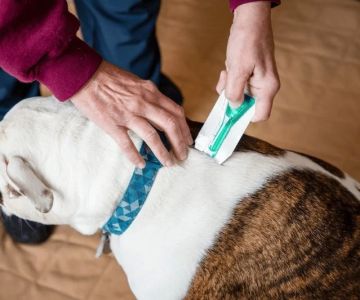Understanding and Treating Dog Ear Infections
- 1. What Are Dog Ear Infections?
- 2. Symptoms of Dog Ear Infections
- 3. Causes of Dog Ear Infections
- 4. How to Treat Dog Ear Infections
- 5. Preventing Dog Ear Infections
- 6. Real-Life Case Study of Dog Ear Infection Treatment
Dog ear infections are common, painful, and often recurrent conditions that can cause discomfort for your pet. They occur when the ear canal becomes inflamed or infected due to bacteria, yeast, or allergies. These infections can affect one or both ears and require timely intervention to prevent further complications.
Recognizing the signs of an ear infection in your dog is the first step toward providing relief. Common symptoms of dog ear infections include:
- Constant scratching or rubbing of the ears
- Head shaking or tilting
- Unpleasant odor coming from the ear
- Redness or swelling inside the ear
- Discharge from the ear (yellow, brown, or bloody)
- Pain when the ear is touched or when your dog is trying to move their head
If you notice any of these symptoms, it’s crucial to have your dog examined by a vet to confirm whether an ear infection is the cause and to begin treatment.
Several factors contribute to the development of dog ear infections. Understanding the underlying causes can help prevent future occurrences:
1. Bacterial and Yeast Infections
These are the most common causes of ear infections in dogs. Bacteria and yeast thrive in moist environments, and dogs with floppy ears are particularly prone to infections because their ear canals don’t allow air to circulate properly.
2. Allergies
Food allergies, environmental allergens like pollen, and even seasonal changes can trigger ear infections in dogs. Allergies can cause inflammation in the ear canal, making it easier for bacteria and yeast to grow.
3. Parasites
Ear mites are a common cause of ear infections, especially in puppies or outdoor dogs. These tiny parasites live in the ear canal and cause irritation and infections.
4. Moisture and Dirty Ears
Excess moisture from baths or swimming can create a breeding ground for infections, especially in breeds with long, floppy ears.
Treating a dog ear infection typically involves a combination of cleaning, medications, and sometimes dietary changes. Here’s how to treat dog ear infections:
1. Cleaning the Ear
Proper ear cleaning is the first step in treating ear infections. Use a vet-approved ear cleaner to gently clean out debris, wax, and any discharge from the ear canal. This will help prevent further infection and provide comfort for your dog.
2. Medication
Your vet will likely prescribe antibiotic or antifungal medications, either in the form of ear drops or oral medication. It’s important to follow the full course of treatment to completely eliminate the infection.
3. Anti-inflammatory Medications
If your dog is experiencing pain or inflammation, your vet may recommend anti-inflammatory medications to reduce swelling and relieve discomfort.
Preventing ear infections in dogs is always better than dealing with one. Here are some tips to help you keep your dog’s ears healthy:
1. Regular Cleaning
Regularly clean your dog’s ears with an appropriate cleaner to remove debris and prevent buildup. Dogs with floppy ears or long fur may require more frequent cleaning.
2. Keep Ears Dry
After baths or swimming, ensure your dog’s ears are thoroughly dried. Use a clean cloth or towel to gently wipe the outer ear and help prevent moisture buildup inside the ear canal.
3. Monitor for Allergies
If your dog has a history of allergies, work with your vet to identify and address potential triggers. Allergy medications or dietary changes may help reduce the risk of ear infections caused by inflammation.
Meet Buddy, a 6-year-old Golden Retriever who suffered from recurrent ear infections. His owner, noticing the usual signs—head shaking and scratching—took Buddy to the vet. After a thorough exam, it was determined that Buddy had a yeast infection in his ears due to excess moisture. The vet recommended an ear cleaner and antifungal ear drops, along with a drying routine after every swim. Within a few weeks, Buddy’s symptoms cleared up, and his owner was educated on maintaining ear hygiene to prevent future infections. This case shows that with the right treatment and preventive care, ear infections can be effectively managed.
If your dog is suffering from ear infections, it’s crucial to address the issue as soon as possible to prevent long-term damage to their hearing or health. There are numerous products available, such as ear cleaners and medications, that can help. Consider investing in these products to ensure your pet’s ears stay healthy and infection-free. Speak to your vet about the best options for your dog’s specific needs.









